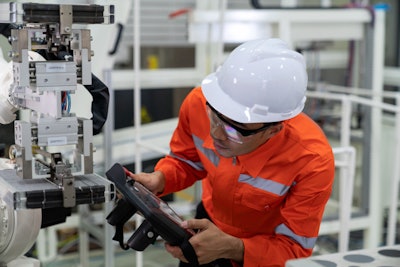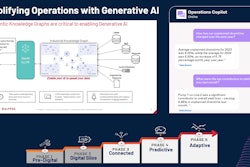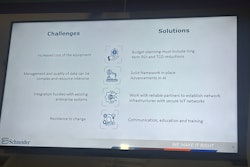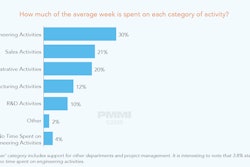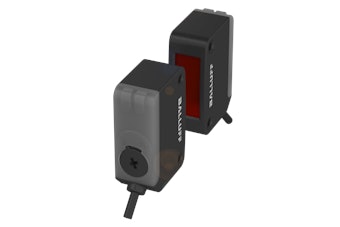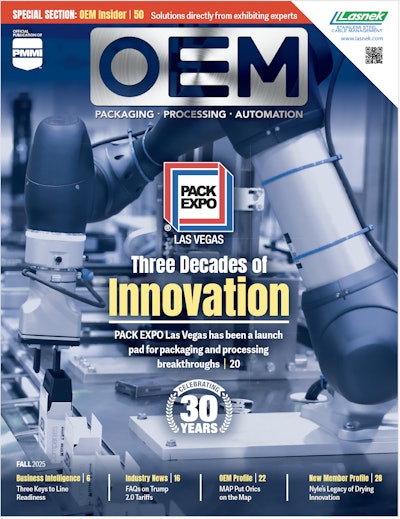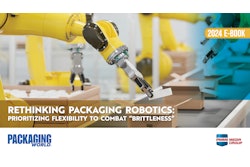Equipment that’s built on a common automation architecture delivers benefits across its life. By reducing disparate technologies and interfaces, the equipment can be more quickly and easily developed, using fewer tools and less specialized knowledge. And it can simplify the jobs of everyone who interacts with it in a production environment. Now, one more disparate technology can be folded into the automation architecture with the introduction of integrated safety instrumented systems (SIS).
Integrated SIS is built on the same platform as the base process control system (BPCS). This allows the two systems to be designed, implemented, operated and maintained together as part of a common architecture.
For OEMs, integrated SIS can simplify and accelerate projects that require process safety or hybrid process and machine safety. And it can help them better differentiate their equipment from the competition by giving end users simplified systems, better insights and streamlined maintenance.
Reduced Engineering Time and Costs
For decades, the different control disciplines used in production environments – like discrete, batch, process and motion – have been converging into a common, integrated architecture. But because the SIS has historically been built on a separate platform and used different logic, it’s remained outside this architecture, operating in isolation.
By bringing the SIS onto the same platform as the BPCS – and thus into the common architecture – an integrated SIS simplifies how equipment is developed and deployed.
Now, engineers don’t need to learn and use two different sets of tools for process and safety control. Instead, they can program and configure the SIS and BPCS together, using a common toolset and single knowledgebase.
The productivity-enhancing features in those toolsets – which until now could only be used on the common automation architecture – can also now be unleashed on the SIS.
For example, some design and configuration tools allow for multi-user collaboration, so engineers who have different skillsets and are in different locations can work on a project simultaneously. And some tools use disruptive technology like AI to help answer engineers’ questions and troubleshoot errors. Extending these features to SIS programming and configuration can help engineers work more efficiently.
Additionally, developing a common HMI display for safety and process control can be greatly eased in a common architecture. Engineers no longer need to navigate the complex process of mapping data from disparate systems that use different logic. Instead, they can use SIS and BPCS data that come from the same platform and are based on a common logic to more easily and intuitively create a display.
Integrated SIS solutions can also modernize how engineers approach process safety to deliver further time and cost savings in projects.
For example, traditional SIS solutions have required engineers to write custom add-on instructions to achieve SIL 2. But recently introduced integrated SIS solutions use the latest control and I/O technology and are engineered to achieve SIL 2 almost out of the box. Rather than writing custom code, engineers can now simply check some boxes for their safety configurations.
Engineers can also take advantage of modern control system capabilities that are available in integrated SIS solutions. Granular safety signatures, for instance, compartmentalize safety functions to shorten SIS validation and testing times.
Eased and Enhanced Safety for End Users
An integrated SIS continues delivering value after the equipment is handed off. It can simplify work for end users just like it can for engineers and reduce the total cost of ownership of their equipment.
Easing the jobs of production staff and helping them do more with technology is becoming more important as workforce challenges persist. Today, 6 in 10 manufacturers say attracting and retaining a quality workforce is one of their biggest challenges.
Integrating the SIS and BPCS onto a common architecture allows operations and maintenance personnel to learn and use just one set of hardware and software for both safety and process control. Maintenance is streamlined, too. Now, spares are needed for just one common architecture instead of two disparate systems. And whether there’s an issue with the SIS or BPCS, technicians can work with just one vendor and don’t need to worry about finger-pointing between vendors.
An integrated SIS can also help end users optimize productivity and uptime in their operations.
For example, an SIS solution that is engineered for high availability, while also offering advanced diagnostics and predictive maintenance capabilities, can minimize safety-related stoppages and other unplanned downtime. The easier mapping of data from the SIS and BPCS into a common HMI could, for instance, give end users visibility into how close their process is to the point where the SIS needs to take over. This could allow them to intervene before issues cause shutdowns.
Breaking Down Barriers
The merging of safety and process control onto a common platform transforms process safety in a way that benefits the entire equipment lifecycle. Now, OEMs can program, configure and commission equipment with SIS more easily, using more streamlined workflows and less specialized knowledge. And they can offer customers equipment that’s easier to use and service, and that can help them maintain both uptime and safety.
